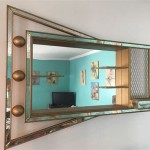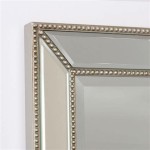Screen Mirroring Windows 10 to Samsung Smart TV
Screen mirroring allows users to display the content of a Windows 10 computer screen on a Samsung Smart TV. This functionality provides a larger viewing experience for presentations, media consumption, and even gaming. Several methods facilitate this connection, each with varying degrees of technical complexity and hardware requirements.
One of the most straightforward methods utilizes the built-in "Connect" feature in Windows 10. This wireless method leverages Miracast technology, which allows for screen mirroring over a Wi-Fi Direct connection. To initiate this connection, users should first ensure their Samsung Smart TV supports Miracast. This information can typically be found in the TV's settings menu or user manual. Once confirmed, users press the Windows key + K on their computer to open the "Connect" pane. The system will then scan for available devices. The Samsung Smart TV should appear in the list of available displays. Selecting the TV will initiate the connection process.
Troubleshooting potential connection issues with the wireless method often involves verifying network compatibility. Both the Windows 10 computer and the Samsung Smart TV must be connected to the same Wi-Fi network, even though Miracast uses a direct connection. If the connection fails, users can try restarting both devices. Updating the network drivers on the computer can also resolve compatibility problems. Furthermore, ensuring that both devices have the latest firmware updates can improve connection stability and performance.
Another method for screen mirroring involves using an HDMI cable. This wired connection offers a more stable and generally higher-quality display experience compared to wireless methods. Connecting an HDMI cable from the computer's HDMI output port to the HDMI input port on the Samsung Smart TV is a straightforward process. Users then need to select the corresponding HDMI input source on their TV using the remote control. The computer should automatically detect the TV as a second display. Display settings on the computer can then be adjusted to mirror the screen or extend the desktop.
While HDMI offers a reliable connection, cable length limitations can sometimes pose challenges. Users should choose an appropriate cable length based on the distance between their computer and the TV. High-quality cables are recommended for optimal signal transmission, especially for higher resolutions like 4K. If audio is not transmitted through the HDMI connection, users may need to adjust their sound settings on the computer to select the TV as the audio output device.
A third option for screen mirroring involves using third-party software applications. Several applications are available that facilitate screen mirroring over a network connection. These applications often provide additional features, such as streaming specific media files or controlling the computer from the TV. Choosing a reputable and well-reviewed application is essential for security and performance. Users should carefully consider the features and compatibility of each application before making a selection. Some applications may require a subscription fee for full functionality.
Security is a paramount concern when utilizing any screen mirroring method. Users should ensure that their network is secure and that they are connecting to the correct device. Avoiding public Wi-Fi networks for screen mirroring is recommended, as these networks can be vulnerable to security breaches. For added security, users can enable network encryption and password protection on their router.
Performance considerations are also relevant when screen mirroring. Wireless methods, while convenient, can sometimes experience latency or lag, especially during high-bandwidth activities like gaming or video playback. Wired connections generally offer superior performance in these scenarios. Adjusting the display resolution on the computer can also impact performance. Lowering the resolution can improve responsiveness, especially on less powerful computers.
Different Samsung Smart TV models may have slight variations in their settings and functionalities. Consulting the user manual for the specific TV model can provide detailed instructions and troubleshooting tips for screen mirroring. The manual will also outline any specific requirements or limitations related to screen mirroring functionality.
Choosing the appropriate method for screen mirroring from Windows 10 to a Samsung Smart TV depends on individual needs and preferences. Factors to consider include the desired level of convenience, required performance, and available hardware. Understanding the advantages and limitations of each method enables users to make an informed decision that best suits their specific use case.

How To Use The Pc On Tv Your Samsung Smart Caribbean

Screen Mirroring To Your Samsung Tv

How To Cast Or Screen Mirror Windows 10 A Smart Tv

How To Screen Mirror Windows 11 A Samsung Smart Tv

How To Screen Mirroring Windows 10 Samsung Smart Tv Wirelessly Techhow

Smart Tv Screen Mirror

How To Cast Media From Windows 10 Pc Your Smart Tv Dignited

Access Your Pc Remotely On Samsung Qled Tv Or Smart Monitor

How To Screen Mirror Windows 11 A Samsung Smart Tv

Full Guide Screen Mirroring On Samsung Via Easy Methods








